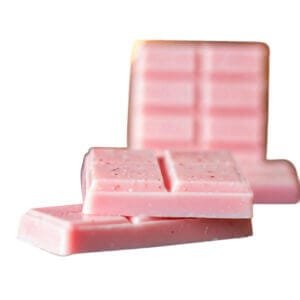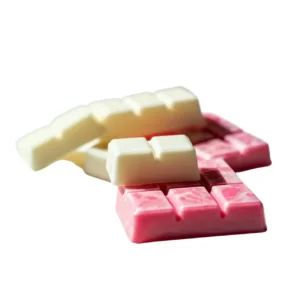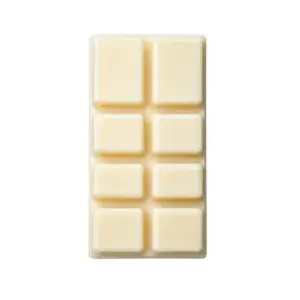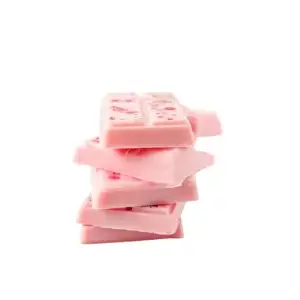Disclaimer
Trademark names and copyrights belong to their respective manufacturers and designers. These versions should not be mistaken for the originals, and Scented Touch is not associated with the manufacturer or designer. Our interpretations of these fragrances are the result of chemical analysis and reproduction, and are provided to give customers an understanding of the scent’s character, without any intention to deceive, mislead, or violate the manufacturer’s or designer’s valuable trademark.
IMPORTANT SAFETY INSTRUCTIONS:
- Most of all, make sure your burner is kept away from drafts, curtains and children and pets.
- Do not put wax melts in your mouth, if eaten go straight to Accident and emergency!
- First of all, pre-wash a new burner oil bowl or ceramic burner with warm soapy and ensure it is completely dry before using it.
- Simply place your wax melts in the top of the dry oil burner and do NOT add water
- Once lit place your tea light at the base of the oil burner allowing the wax melts to heat up and melt releasing the fragrance into your room.
- We recommend you use the tea lights which burn between 2 – 4 hours.
- Extinguish the tea light candle when leaving the room and never leave your oil burner unattended or within reach of children.
- Once the tea light is extinguished the wax will solidify, you can either re-use again.
- To discard gently tap the sides of the burner and most times the wax tart will pop out, If not place the oil burner in the freezer for a short time and try again. If all else fails, maybe light the tea light and let it warm the wax for a few seconds enough to loosen the wax and push it out who and then finally wipe any excess with a tissue.
- Our wax melts work well in both an electric oil burner and also the traditional style oil burner.
- Finally, only be use an electric burner if it has passed a safety standard.
- Oil burners can become hot, therefore, always use a heat proof mat to place your burner on.
Never leave your burner unattended.
How to discard your wax!
- You can either light a tea light and after a few seconds it will warm the bottom of the wax enough to push out of the oil bowl and then wipe clean.
- You can put your oil burner in the freezer for 10-15 mins and then the wax will easily pop out.
- For Glass oil burner bowls, run under hot water and then push the wax out.
- Finally you could use a blunt instrument to gently persuade the wax from the burner.
- Take care not to damage the glass or ceramic.
- Avoid use of metal or sharp objects.
- Do not use if you notice a crack in the glass.
- Remove the remaining wax with warm water and a moist cloth or sponge.
- Ensure you avoid contact with eyes and skin, if contact occurs, flush with water. If irritation persists, contact a physician.
- If using the Freezer or Fridge method to remove wax – Finally always Remember to allow your burner to return to room temperature before using again – or it may crack from the heat of the tea light.
Ingredients
1-(1,2,3,4,5,6,7,8-Octahydro-2,3,8,8-tetramethyl-2-naphthalenyl)ethanone, 3,7-Dimethyl-1,6-nonadien-3-ol, 4-tert-Butylcyclohexyl acetate, Ethyl methylphenylglycidate, Linalyl acetate, and alpha-Hexylcinnamaldehyde.
Acetyl cedrene, methyl cinnamate, 4-tert-butylcyclohexyl acetate, Iso E-Super, Benzyl benzoate, Geraniol, alpha-iso-methyl ionone, d-Limonene, Benzyl cinnamate, Linalool, Coumarin, Citronellol, and alpha-Hexylcinnamaldehyde.
l-Menthone.
Let’s break down these fragrance ingredients:
2,4-Dimethyl-3-cyclohexen-1-carboxaldehyde: This synthetic aldehyde has a complex scent profile, often described as woody, green, slightly camphoraceous (like camphor or eucalyptus), and sometimes with a hint of citrus or floral notes. It’s used to add depth and complexity to fragrance compositions, particularly in woody, chypre, and fougère (fern-like) accords.
4-tert-Butylcyclohexyl acetate: This synthetic ester has a fresh, clean, floral scent, often compared to lily-of-the-valley (muguet). It’s used extensively in perfumery to create fresh, floral, and sometimes slightly green notes in various fragrance types, including floral bouquets, aquatic scents, and even some woody compositions.
Ethyl methylphenylglycidate (Often sold under trade names like “Strawberry Glycidate”): This synthetic ester has a sweet, fruity, and distinctly strawberry-like scent. It’s used to create or enhance strawberry accords in perfumes, flavorings, and other scented products. It can also add a sweet, fruity lift to other fragrance types.
Geraniol (3,7-Dimethyl-2,6-octadien-1-ol): As previously described, geraniol is a naturally occurring monoterpenoid alcohol found in plants like rose, geranium, and palmarosa. It has a sweet, rosy, and floral scent. It’s used to add a rich, rosy, and floral note to perfumes and other scented products.
Linalool (3,7-Dimethyl-1,6-octadien-3-ol): As previously described, linalool is a naturally occurring monoterpene alcohol found in many flowers and spices like lavender and coriander. It has a fresh, floral scent with a slightly sweet and woody undertone.
Linalyl acetate (3,7-Dimethyl-1,6-octadien-3-yl acetate): This is the acetate ester of linalool. It’s also naturally occurring and has a similar scent to linalool but is often described as sweeter, more floral, and with a slightly citrusy or bergamot-like aspect. It’s used to add a fresh, sweet, and floral note to perfumes and other scented products.
Piperonal (3,4-Methylenedioxybenzaldehyde; also known as Heliotropin): This is a synthetic aldehyde with a sweet, powdery, floral scent reminiscent of heliotrope flowers, almonds, or cherry. It’s used to add a warm, powdery, and floral note to perfumes and other scented products, often contributing to powdery, almond, or cherry accords.
alpha-iso-Methylionone (Isomethyl-alpha-ionone): As described previously, this is a synthetic fragrance ingredient with a powdery, floral, and slightly woody scent, reminiscent of violets or irises.
d-Limonene (1-Methyl-4-(1-methylethenyl)cyclohexene): As previously described, d-limonene is a cyclic monoterpene and the main component of citrus peel oils. It has a strong, fresh, citrusy, and lemony scent.
dl-Citronellol (3,7-Dimethyl-6-octen-1-ol): As previously described, citronellol is a naturally occurring monoterpenoid alcohol with a fresh, floral, rosy, and citrusy scent. The “dl-” prefix indicates it’s a racemic mixture (equal amounts of the two enantiomers, d-citronellol and l-citronellol).
This list contains a diverse range of scent profiles, including woody, green, camphoraceous, floral (lily-of-the-valley, rose, violet, heliotrope), fruity (strawberry), citrusy (lemon), and powdery notes. It contains both naturally occurring and synthetic ingredients. This is for informational purposes only. For medical advice or diagnosis, consult a professional.









Reviews
There are no reviews yet.